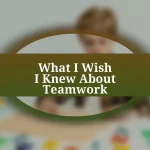Key takeaways:
- Creativity in leadership enhances engagement, innovation, and team dynamics through open dialogue and playful challenges.
- Implementing creative drills fosters a culture of innovation, skill development, and collaboration within teams.
- Encouraging feedback and celebrating contributions promotes a sense of ownership and continuous growth among team members.
- Adapting drills based on team dynamics allows for tailored approaches that enhance learning and creativity in varying skill levels.

Understanding creativity in leadership
Creativity in leadership is often about embracing different perspectives and encouraging innovative solutions. I remember a time when I was leading a team through a complex project. Instead of sticking to our usual methods, I encouraged everyone to brainstorm wild ideas, and it was incredible to see how those conversations sparked fresh insights and a sense of ownership among the team.
It often strikes me how many leaders shy away from creativity, fearing it might derail their plans. But what if I told you that allowing a bit of chaos actually leads to better outcomes? I once implemented a “creative hour” in my meetings, where we could explore unconventional approaches. The results were surprisingly positive, transforming our projects and strengthening team bonds.
When I think about the role of creativity in leadership, it’s clear that it fosters both engagement and growth. Don’t leaders have a responsibility to cultivate an environment where creativity can thrive? In my experience, creating spaces for open dialogue not only empowers individuals but also drives collective success. The energy that flows when people feel free to express their ideas is what ultimately propels teams forward.

Importance of creative drills
Creative drills are essential in shaping a dynamic learning environment. I recall an occasion when I introduced a game-like approach to a routine drill. Instead of the usual drill monotony, we incorporated playful challenges that encouraged team members to think outside the box. The joy in their faces was priceless, and the creativity that blossomed not only enhanced their skills but also deepened our connection as a team.
Implementing creative drills can ignite enthusiasm and foster a culture of innovation. Here are some key reasons why they are important:
- Engagement: When people are excited about what they’re doing, they are more likely to invest effort and come up with unique solutions.
- Skill Development: Through imaginative approaches, individuals can explore and refine new techniques they might overlook during traditional drills.
- Team Dynamics: Creative drills promote collaboration and camaraderie, breaking down barriers that often hinder progress.
- Adaptive Thinking: They encourage team members to navigate uncertainty and develop quick problem-solving skills, which are invaluable in real-world situations.

Techniques for fostering creativity
Leveraging open-ended questions is a powerful technique I often use to foster creativity during drills. For instance, when leading a recent practice session, I asked my team, “How can we turn this regular drill into a competitive challenge?” This question opened the floodgates to unique ideas that transformed a mundane task into an inspiring team event. It was evident that by inviting my team to contribute their thoughts, they felt more invested and engaged.
Another valuable approach is to incorporate role-playing elements into drills. I remember once asking team members to assume different personas while executing a drill, such as being a coach, an athlete, or even a spectator. This not only added a layer of fun but also encouraged them to see things from different perspectives. They began to understand not just their role, but also the dynamics of the team as a whole.
Finally, flexibility in structure can greatly enhance creative output. Sometimes, I consciously allow for deviations from the set plan. During one memorable drill, a spontaneous suggestion to change the order of exercises led us to uncover new strategies that we wouldn’t have explored otherwise. Witnessing my team’s excitement as they embraced this new direction was an unforgettable experience.
| Technique | Description |
|---|---|
| Open-Ended Questions | Encourages team members to share ideas, fostering ownership and innovation. |
| Role-Playing | Adds fun and perspectives, enabling deeper understanding of team dynamics. |
| Flexible Structure | Allows for spontaneous changes that can unveil unexpected strategies and insights. |

Engaging team members effectively
Engaging team members effectively starts with fostering an environment of trust and openness. I recall a team meeting where I shared a personal challenge I faced while leading a project. By being vulnerable, I noticed my team members responded by sharing their own struggles, creating a bond that made everyone feel more comfortable to voice their ideas during drills. Isn’t it fascinating how sharing our experiences can unlock hidden creativity?
Another effective strategy is to celebrate small victories during drills. I often take a moment to acknowledge when a team member presents a great idea or successfully implements a new technique. The smiles and enthusiasm that follow these acknowledgments are infectious and serve as motivation. It’s vital to reinforce that each contribution, no matter how small, is valued and can lead to greater success. Have you ever seen how a simple acknowledgment can transform a team’s morale?
Lastly, incorporating playful challenges can spark engagement in unexpected ways. I once introduced a light-hearted competition within a drill, where teams had to come up with creative solutions to a problem we faced. The room buzzed with energy as ideas flowed freely. In moments like those, I realized that creativity thrives when we allow our team to have fun while collaborating. How often do we create that space for joy and innovation in our drills?

Incorporating feedback into drills
Incorporating feedback into drills can significantly enhance the learning experience. During one of our practice sessions, I encouraged team members to voice their thoughts immediately after each drill. The insights shared were invaluable, leading to changes that not only improved performance but also made everyone feel heard. Have you ever noticed how quickly teams can recalibrate when they feel their feedback matters?
I also make it a point to revisit past drills and solicit feedback on what worked and what didn’t. After one session focused on communication, I asked my team to reflect on their experiences. To my surprise, the dialogue led to a groundbreaking idea that we implemented in future drills. It showed me that revisiting previous feedback not only fosters improvement but also reinforces a culture of continuous growth. How often do you ask your team to reflect on their experiences to drive innovation?
Finally, I believe that a feedback loop creates a sense of ownership within the team. After a particularly intense drill, I shared my own reflections, then invited each member to share theirs. This not only validated their efforts but also opened up a treasure trove of perspectives that we could build on. I cherish these moments, as they remind me how collective insights can fuel creativity and push us beyond our limits. Isn’t it amazing how collaboration can spark fresh ideas?

Measuring creativity outcomes
Measuring creativity outcomes can often feel elusive, but I’ve found that specific metrics can bring clarity. For instance, after a series of creative drills, I ask my team to rate their ideas on a scale of one to five. This method not only quantifies creativity but also surprises me with the volume of innovative solutions that emerge. Have you considered how numerical ratings could transform your approach to assessing creativity?
In one memorable session, I implemented a post-drill brainstorming activity where each team member presented their top three ideas. We then voted as a group on which ideas to pursue further. This approach not only organized our creative output but also showed me firsthand how collective prioritization can illuminate paths that I might not have considered alone. It’s fascinating to witness how diverse thoughts can converge into a singular vision.
Reflecting on these methods, I believe the emotional journey is as crucial as the metrics themselves. I always try to gauge the energy in the room during these evaluations. When my teammates express excitement about their contributions, it’s a stark indicator of creativity thriving. When was the last time you felt that spark of creative enthusiasm in your team? Those moments are invaluable and tell me everything I need to know about the effectiveness of our creative drills.

Adapting drills for different teams
Adapting drills for different teams requires an understanding of their unique dynamics and skill sets. I remember leading a session with a group of seasoned players who thrived on competitive energy. I modified a regular passing drill into a timed challenge, which added excitement and pushed them to innovate under pressure. The difference was palpable; their creativity blossomed in a high-stakes environment that suited their abilities.
Conversely, with a less experienced team, I focused on foundational skills but introduced elements of playfulness. We turned basic drills into a fun game where scoring points came from executing creative variations. It was rewarding to see their confidence grow as they engaged with the drill. How do you think a playful attitude can elevate the learning experience for beginners in your sessions?
Ultimately, my approach to adapting drills hinges on constant observation and feedback. I often check in with my teams during practice, asking how they feel about the adjustments. Their input not only shapes the drills but also fosters a sense of ownership in the creative process. Have you considered the impact of collaborative input in refining your drills? The engagement it generates can lead to unexpected bursts of innovation that we might have missed otherwise.


